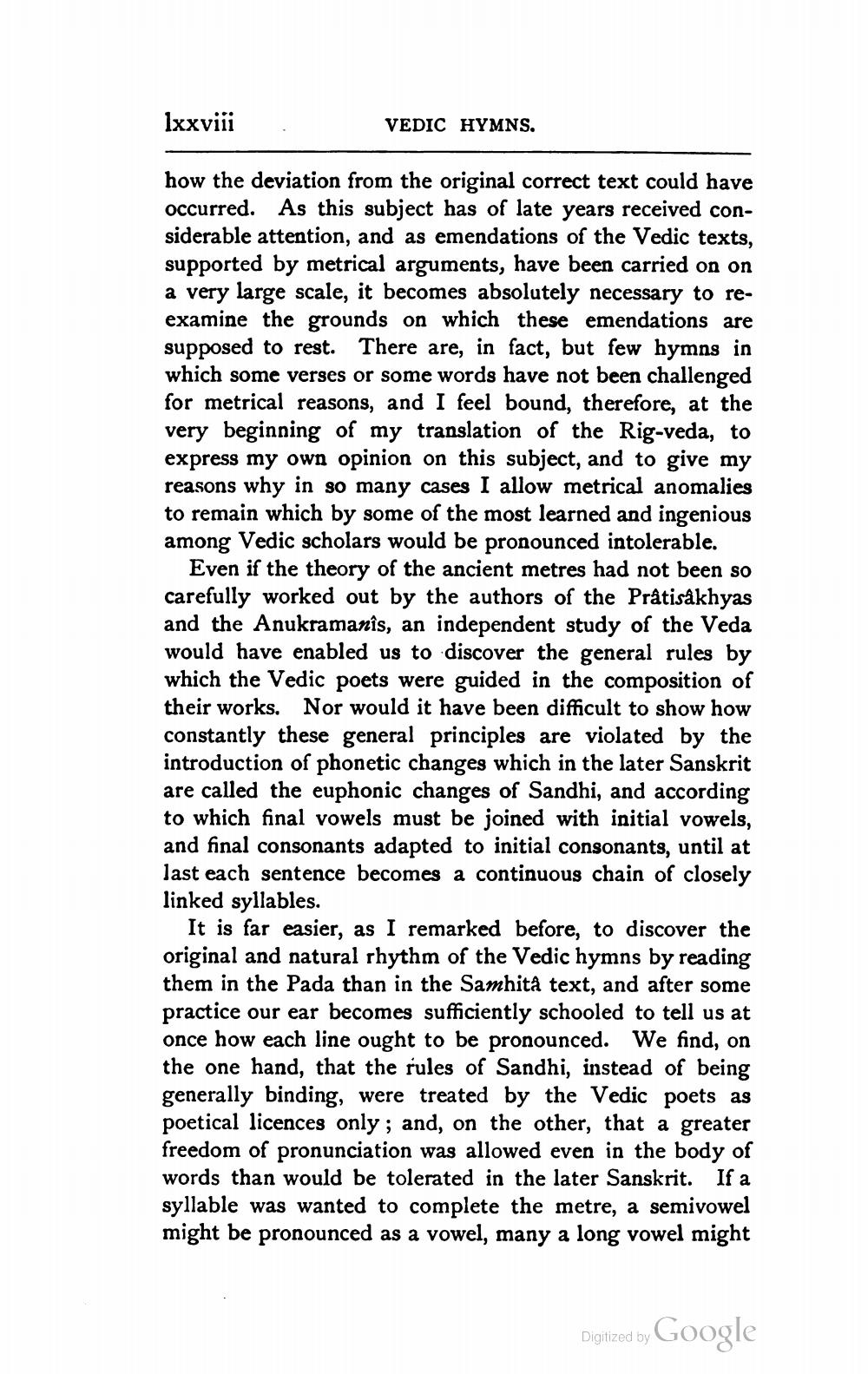________________
lxxviii
VEDIC HYMNS.
how the deviation from the original correct text could have occurred. As this subject has of late years received considerable attention, and as emendations of the Vedic texts, supported by metrical arguments, have been carried on on a very large scale, it becomes absolutely necessary to reexamine the grounds on which these emendations are supposed to rest. There are, in fact, but few hymns in which some verses or some words have not been challenged for metrical reasons, and I feel bound, therefore, at the very beginning of my translation of the Rig-veda, to express my own opinion on this subject, and to give my reasons why in so many cases I allow metrical anomalies to remain which by some of the most learned and ingenious among Vedic scholars would be pronounced intolerable.
Even if the theory of the ancient metres had not been so carefully worked out by the authors of the Prátisåkhyas and the Anukramanîs, an independent study of the Veda would have enabled us to discover the general rules by which the Vedic poets were guided in the composition of their works. Nor would it have been difficult to show how constantly these general principles are violated by the introduction of phonetic changes which in the later Sanskrit are called the euphonic changes of Sandhi, and according to which final vowels must be joined with initial vowels, and final consonants adapted to initial consonants, until at last each sentence becomes a continuous chain of closely linked syllables.
It is far easier, as I remarked before, to discover the original and natural rhythm of the Vedic hymns by reading them in the Pada than in the Samhita text, and after some practice our ear becomes sufficiently schooled to tell us at once how each line ought to be pronounced. We find, on the one hand, that the rules of Sandhi, instead of being generally binding, were treated by the Vedic poets as poetical licences only; and, on the other, that a greater freedom of pronunciation was allowed even in the body of words than would be tolerated in the later Sanskrit. If a syllable was wanted to complete the metre, a semivowel might be pronounced as a vowel, many a long vowel might
Digitized by Google




